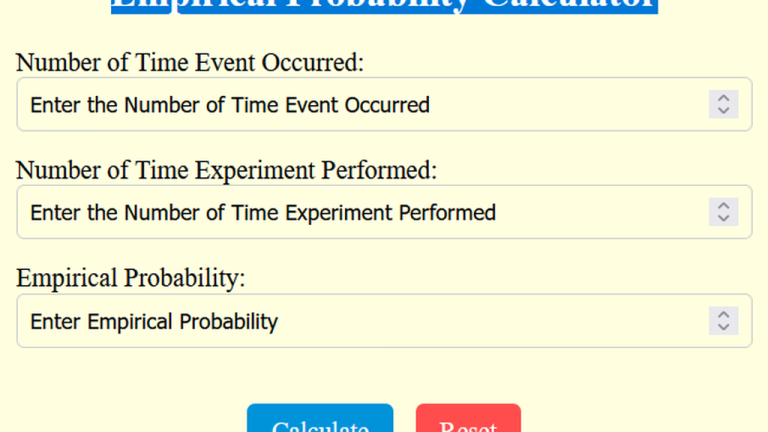Steel Bar Weight Per Foot Calculator
To calculate the weight per foot of a steel bar, multiply the square of the bar’s diameter (in feet) by its density and apply the appropriate formula.
To calculate the weight per foot of a steel bar, multiply the square of the bar’s diameter (in feet) by its density and apply the appropriate formula.
The Steel Bar Weight Per Foot Calculator is a vital tool for engineers, builders, and metal fabricators. This calculator helps estimate the weight of steel bars based on their dimensions, such as diameter and length, which is crucial for determining material requirements in construction and manufacturing.
W/ft = π ∗ (D/2/12)² ∗ d
| Variable | Description |
|---|---|
| W/ft | Weight per foot (lbs) |
| D | Diameter of the bar (inches) |
| d | Density of steel (lb/ft³, typically ~490 lb/ft³) |
Example 1: Calculate Weight for a 1-inch Diameter Steel Bar
| Parameter | Value |
|---|---|
| Diameter (D) | 1 inch |
| Density (d) | 490 lb/ft³ |
| Result | 0.269 lbs/ft |
Example 2: Calculate Weight for a 2-inch Diameter Steel Bar
| Parameter | Value |
|---|---|
| Diameter (D) | 2 inches |
| Density (d) | 490 lb/ft³ |
| Result | 1.076 lbs/ft |
The Steel Bar Weight Per Foot Calculator is an essential tool for determining the weight of steel bars based on their length and dimensions.
This tool helps engineers, builders, and fabricators accurately estimate steel requirements for construction or manufacturing projects, ensuring efficiency and cost-effectiveness.
By inputting the bar’s diameter and length, the calculator uses a standard formula to compute weight per foot in kilograms or pounds.
For example, a commonly used formula for round bars incorporates the diameter squared and a constant to provide precise results.
This tool is highly versatile, covering various steel shapes like rods, pipes, and rebar, and is particularly useful for comparing steel bar weights per foot in different measurement systems.
It’s ideal for applications like calculating the weight of 4-sooter steel or estimating the weight of a 40-foot steel bar. The calculator also supports users in determining weights from steel bar charts or custom dimensions, streamlining project planning and material procurement.
To summarize, the Steel Bar Weight Per Foot Calculator simplifies weight calculations for steel bars, making it invaluable for professionals in construction and fabrication. It ensures precise material estimates, saving time and reducing waste.
To calculate the angle of repose, use the ratio of the height to the radius of the material pile and apply the arctangent function. The Angle of Repose Calculator determines the steepest angle at which a material remains stable without sliding. It is commonly used in engineering, construction, and material science to assess the flow…
To calculate the flow rate of a hose, input the hose diameter, pressure, and length into the formula to determine the volume of water flowing through it per unit of time. The Hose Flow Rate Calculator helps you determine the rate at which water flows through a hose based on its diameter, pressure, and length….

Divide the number of observed outcomes by the total number of experimental outcomes to determine the empirical probability. The Empirical Probability Calculator is a useful tool for determining the likelihood of an event based on actual experimental data. Unlike theoretical probability, which is based on predictions, empirical probability uses real-world observations. This calculator is widely…

To calculate the size of a fractal antenna, use the formula, which considers the number of iterations (nnn) to determine the total length of the antenna. Fractal Antenna Size Calculator Enter any 1 value to calculate the missing variable Number of Iterations Fractal Antenna Size Calculate Reset The Fractal Antenna Size Calculator is a specialized…
To calculate the market price of a product or security, multiply the price per share (PPS) by the total number of shares (S). The Market Price Calculator is a powerful tool used to determine the market price of goods, securities, or assets based on their price per unit and quantity. This tool is particularly useful…
Multiply your body weight by 0.10, then add the skill level adjustment to determine the ideal bowling ball weight. The Bowling Ball Weight Calculator is a valuable tool designed to help bowlers find the ideal bowling ball weight for their needs. Whether you’re a beginner, a senior, or a professional, selecting the right ball weight…